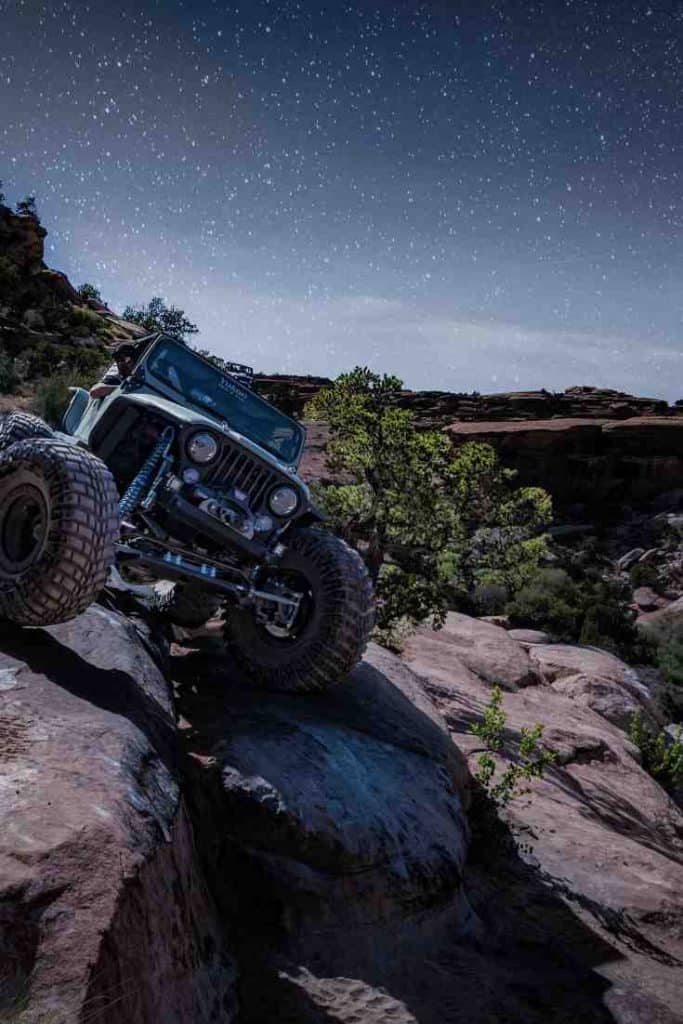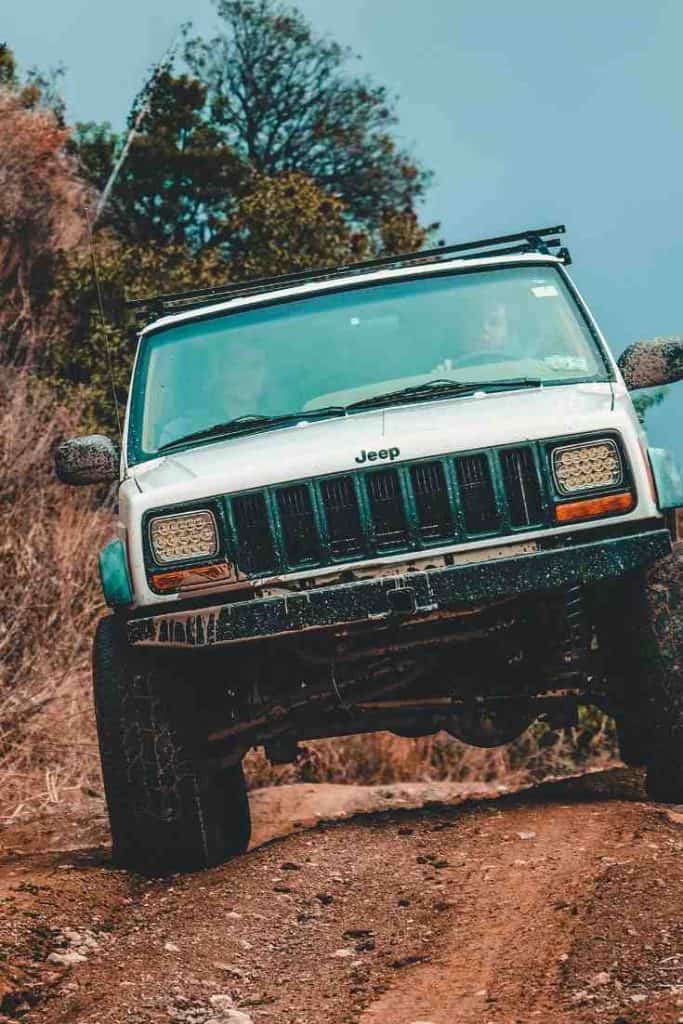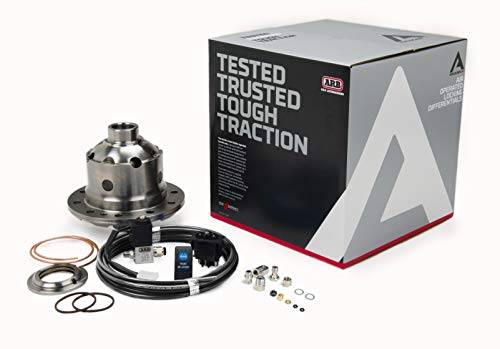Do All Jeeps Have Locking Differentials?
If it’s your First jeep, or maybe your first 4 x 4, the locking differential can pose some interesting questions. What does it do? Do all Jeeps have a Locking Differential?
If you are searching for some quick answers to how the differential works on a Jeep, we will cover them all.
Do All Jeeps Have Locking Differentials?
Do All Jeeps Have Locking Differentials? No. All Jeeps do not have locking differentials.
However, all 4 x 4 Jeeps share power with the front and rear axles when your 4-wheel drive system is engaged. When you are in 2-wheel drive mode, power is only sent to the rear axle in the case of a Jeep Wrangler.
Within the Jeep Wrangler lineup, the Rubicon edition comes with true locking differentials. Most do not.
What Is A Jeep Locking Differential?
Here are a few basics to keep mind as we explore jeeps and differentials:
- The differential is a medium that transfers energy from one tire to the other depending on the resistance it receives from normal driving conditions.
- There is a big difference between an open differential and a locking differential.
- All Jeeps will have a rear differential, but not all vehicles will have a locking rear differential.
Now we’re ready to explore differentials in more detail.
Watch this quick video to understand how a Jeep locking differential works.
Do All Jeeps Have Locking Differentials?
When talking about the different models of Jeeps available on the market, the only ones that have locking differentials are the four-wheel-drive options.
The All-Wheel-Drive options on the Jeep do not come with locking differentials unless you get a newer model from 2014 and above.
A dash light with 4 axles and an X in the middle may illuminate on the dashboard.
A second option is the ability to lock the differentials manually at lower speeds, for these Jeeps, there is an AWD lock button, for which a dash light will illuminate either with the words AWD LOCK or 4 axles with no X in the middle.
If driving at higher speeds, the All-wheel drive lock will automatically release to prevent damage to the system.
You can read more about that here at yourmechanic.com. One other option to consider is the selectable two-wheel drive with a rear air locker.
The two-wheel-drive with rear air locker is an option on some Rubicons, with an ARB selector switch. This option allows you to lock the rear differentials if your two-wheel-drive becomes stuck.
This option locks the rear differential so that the same resistance applies to both rear tires, instead of the one that is stuck. Teraflex news has a great article on how this option works here.
Not All Jeeps Are Created Equal
The only models that four-wheel drive comes standard in are the Jeep Wrangler, including the Rubicon.
At this time, these models are the only models to which the two-wheel-drive is not an option. Two-wheel-drive is standard on all other models with the opportunity to upgrade to 4 wheel dirve or All-Wheel-Drive.
All Jeeps, however, are trail rated, but with different ratings per model. Some jeeps are rated for really tough trails that require some pretty crafty gear to get in and out of, and others are rated for light dirt trails, such as ones that will take you to a fancy lake bed.
The trail rating is given to the Jeep model from the manufacturer and is a rating based on terrain tests that the model can accomplish.
They test the models for Maneuverability, Traction, Articulation, Water Fording, and Ground Clearance.
However, not all Jeeps are going to have a locking differential, either. Since some jeeps are purposely made with a front-wheel-drive but still trail rated, this vehicle is more for the weekend adventurer than the rugged outdoorsmen.
Here is a neat video on the trail-rated test from Jeep.
How Do Differentials Work

As you drive down the road, several things are going on instantaneously that affect the traction of your vehicle. The differential has more to do with turning the car than it does four-wheel driving. Every vehicle has two differentials, a front one and a rear one.
Differentials work by transferring the resistance to the least resistance tire. When the differential locks, an equal amount of force is transferred between both tires.
This option turns your axle into a solid-state shaft, by locking the differential. Both tires connected to that differential are going to turn at the same rate regardless of road resistance.
Usually, the front differential is located inside the transmission, and the drive axle turns the rear differential. This setup helps the vehicle make those tight U-Turns everybody wants.
Both tires are not turning at the same rate, the tire that is doing all the work is the one on the outside. The inside tire is just sitting there, waiting for the turn to be complete.
When the differential is locked in place, say, during that U-turn, both tires are turning at the same rate, which in this case, causes more resistance to your U-turn and a broader turn.
Since both tires must complete the same rotation but are at different distances from the center of the rear differential, this Changes the path of the least resistance.
M.I.T. has an excellent diagram of how a Differential works here.
Open Versus Locked Differentials

When driving, you come across obstacles in the road that you probably don’t even pay much mind to anymore.
Some of the things that you can quickly run into driving on the road are loose gravel and sand, water puddles, potholes, and even objects in the path that are unavoidable.
Under normal driving conditions, your differentials are open, meaning that they balance the resistance from each tire based on the distance the tire is from the center of the axle.
The differential also gives the shaft a little play in how hard it must work to get you to your destination. When you hit a patch of sand on one tire, the differential sends power to the path of the least resistant.
Under an open differential, your tires have independent rotation, lighter steering, and can handle all sorts of average terrain. Sometimes, however, you must slow down, such as on snowed roads that you need chains to cross.
You need all four tires to turn at the same rate to avoid slipping or becoming stuck. It would be best if you also traveled slowly to prevent any damage to the vehicle.
When locking the rear differentials, your tires turn at the same speed, and it becomes tougher to steer the vehicle. You are also driving in four-low traveling under 20 miles per hour, or even slower.
With the differential locked, it is almost like you have one single axle pushing both tires, or all four tires at the same speed regardless of road resistance.
This setting can help you climb a ravine, or get unstuck from the mud, even cross a lake if need be.
Newer vehicles post-2016 all have electronic locking mechanisms on them for All-wheel-drive and four-wheel-drive options.
This setting allows you to easily switch between both open and locked differentials without having to exit the vehicle.
Some Jeeps even have an automatic setting, which automatically unlocks the rear differential at a certain speed, such as 27 miles per hour.
Having this setting prevents damage to the vehicle from drivers that easily forget to take their Jeep out of lock mode when traveling tough terrain.
The Main Difference between Open and Locked Differentials
| Open | Locked | |
| Independent Tire Rotation | X | |
| Tires turning the same speed | X | |
| Used For Tight Turns | X | |
| Used For Steep Obstacles | X | |
| Used in the rain | X | |
| Used in the Snow | X | X |
| Tire Drag | X | |
| Tougher Steering | X |
Final Thoughts/Conclusion
Jeeps are enjoyable toys–they allow us to explore areas to which we usually would not even be able to hike to within a reasonable amount of time.
The average human can only travel 30 miles a day on foot—if the terrain is mainly flat.
The Jeep allows us to explore and keep the adventure alive in this modern metro-centric world. We are all rushing to survive when we need to be rushing to live.
“Because in the end, you won’t remember the time you spent working in the office or mowing your lawn. Climb that mountain.”
-Jack Kerouac
Popular Jeep Locking Differentials
Last update on 2024-07-18 / If you click this affiliate link and make a purchase, we earn a commission at no additional cost to you.


